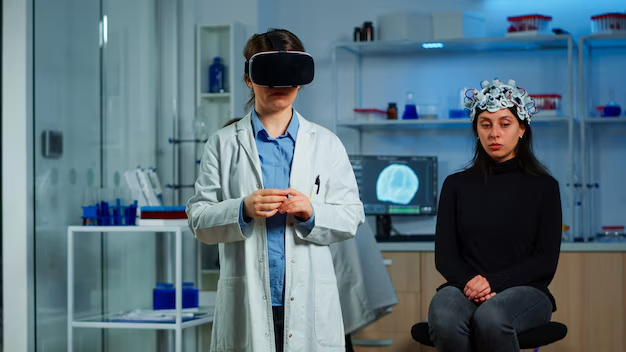Artificial Intelligence (AI) is profoundly transforming the medical field, bringing groundbreaking advancements to diagnostics. The integration of AI into healthcare has enabled quicker, more accurate, and personalized diagnoses, marking a significant shift from traditional methods. By leveraging machine learning, natural language processing, and big data analytics, AI is reshaping the way healthcare professionals identify and treat diseases.
Enhanced Accuracy in Diagnoses
One of the most significant benefits of AI in medical diagnostics is its ability to enhance accuracy. Traditional diagnostic methods, though effective, often rely on the subjective interpretation of medical professionals. AI algorithms, trained on vast datasets, minimize human error and identify subtle patterns that might escape human observation. For instance, AI-driven tools in radiology can detect early signs of cancer in medical imaging with remarkable precision, saving countless lives through early intervention.
Faster Detection of Diseases

AI-powered systems significantly reduce the time required to diagnose diseases. In critical conditions such as stroke or heart attack, every second counts. AI tools can analyze patient data and medical reports almost instantaneously, providing real-time insights that guide timely treatments. This speed not only improves patient outcomes but also reduces the workload on medical staff, allowing them to focus on delivering care.
Personalized Treatment Plans
The era of one-size-fits-all medical treatment is being replaced by personalized care, thanks to AI. By analyzing an individual’s genetic makeup, medical history, and lifestyle factors, AI algorithms can recommend tailored treatment plans. This personalized approach enhances the efficacy of therapies, minimizes side effects, and improves patient satisfaction.
Predictive Analytics in Healthcare
AI’s ability to predict potential health issues before they manifest is a game-changer. By analyzing trends and patterns in patient data, AI can identify individuals at high risk of developing chronic conditions like diabetes or cardiovascular diseases. Predictive analytics enables preventive measures, reducing the burden on healthcare systems and enhancing patient quality of life.
Bridging the Gap in Healthcare Access
AI is playing a vital role in addressing healthcare disparities, especially in remote and underserved areas. AI-powered telemedicine platforms and mobile health applications bring diagnostic capabilities to patients who lack access to traditional healthcare facilities. These innovations democratize healthcare, ensuring that quality diagnostic services reach every corner of the globe.
Conclusion
AI is revolutionizing medical diagnostics, offering unprecedented accuracy, speed, and personalization. While challenges such as data privacy and ethical concerns remain, the potential of AI to transform healthcare is undeniable. As technology continues to advance, the collaboration between AI and healthcare professionals will pave the way for a healthier future, where early detection and effective treatment become the norm.
FAQs
Q. How does AI improve diagnostic accuracy?
AI enhances diagnostic accuracy by analyzing large datasets and identifying patterns that might be missed by human professionals. This reduces the risk of misdiagnosis.
Q. Can AI replace doctors in diagnosing diseases?
While AI aids in diagnosis, it cannot replace doctors. It acts as a supportive tool, enabling medical professionals to make informed decisions.
Q. What are the ethical concerns of using AI in healthcare?
Key ethical concerns include data privacy, consent, and potential biases in AI algorithms. Ensuring transparency and accountability is crucial.
Q. How is AI used in predicting diseases?
AI uses predictive analytics to identify high-risk patients by analyzing trends in their medical data, enabling preventive measures.
Q. What challenges does AI face in medical diagnostics?
Challenges include integration with existing systems, data security, high costs, and the need for rigorous validation to ensure reliability.

